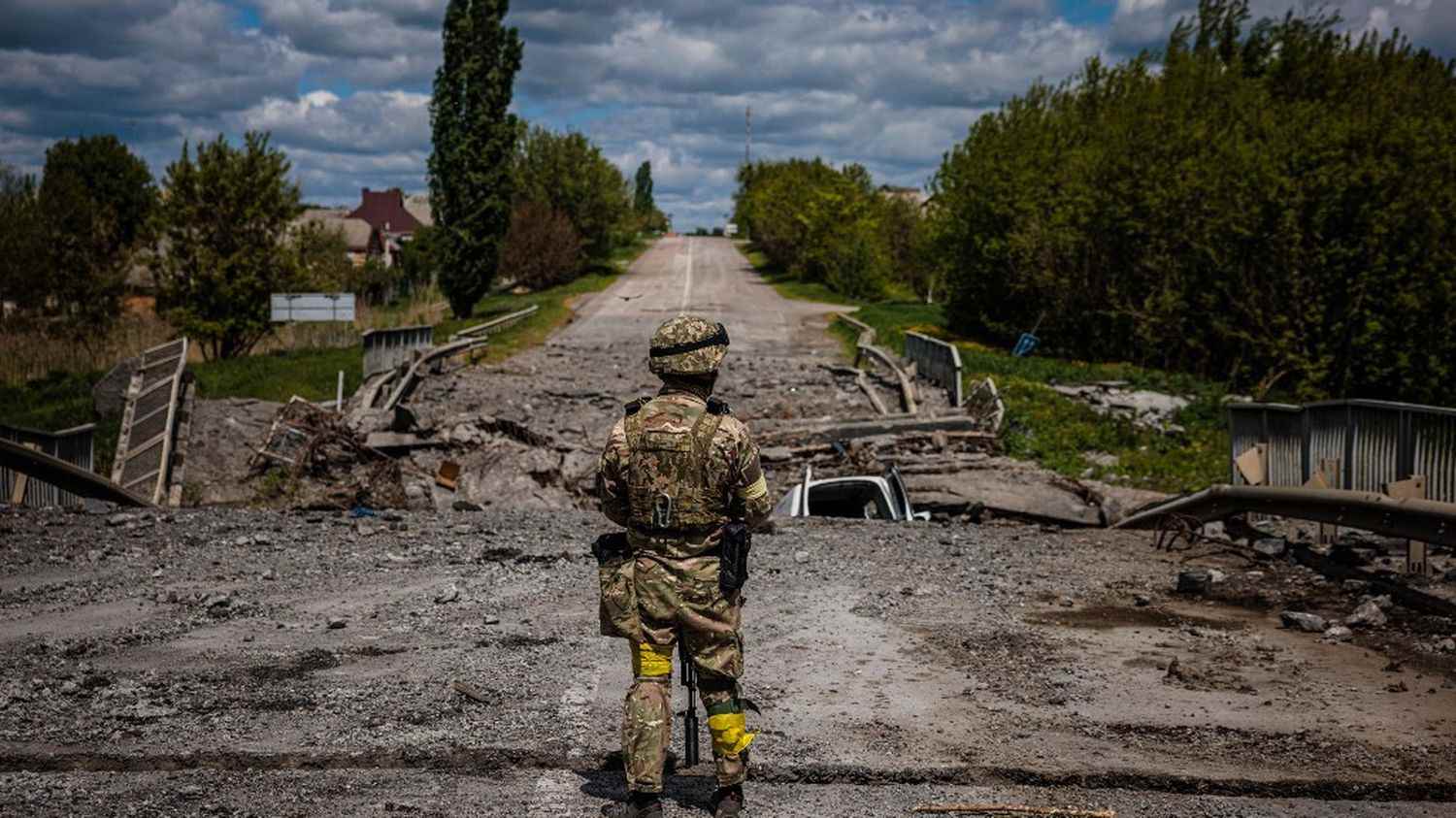Serious statements. A short break. Then a glimmer of hope. “Ukraine can win this war”, took to hoping the Secretary General of NATO, Jens Stoltenberg, Sunday, May 15. However, when Russia launched its offensive on Ukraine on February 24, the prognoses were much bleaker. Franceinfo explains to you why NATO sees the possibility of a favorable outcome for kyiv.
>> War in Ukraine: follow the evolution of the situation live
Because the Ukrainian army is regaining ground
This is yet another major setback for the Russian military. The Ukrainians have regained control of the city of Kharkiv, the country’s second largest city, less than 40 kilometers from the Russian-Ukrainian border and targeted since the start of the conflict.
A symbolic step forward for a Ukrainian army “who had not fought much [avant le début de la guerre] and who showed unexpected resistance”, explains Christine Dugoin-Clément, researcher associated with the “risks” chair of the IAE Research Laboratory. At the start of the conflict, Moscow was counting on a rapid fall of kyiv, but the capital held firm. The Russian forces then tried to withdraw to the Donbass to take the Ukrainian soldiers posted in the east of the country in a pincer movement, again without achieving their ends quickly.
Today, despite the continuation of the Russian attacks in the Donbass, the Ukrainian troops are themselves launching the offensive in the direction of Izium, a city controlled by Russia. Some kyiv soldiers even managed to reach the Russian-Ukrainian border near Kharkiv.
“Russian troops had voluntarily withdrawn from kyiv. Kharkiv, on the other hand, was successfully regained by Ukrainian forces.”
Christine Dugoin-Clément, researcherat franceinfo
At the same time, the Russian objectives have been reviewed. “According to recent statements, the goal is no longer to demilitarize and ‘denazify’ Ukraine, but to control the Donbass and connect it to Crimea through a corridor”, explains Christine Dugoin-Clément. On this point too, their progress is limited.
However, the Ukrainian army does not dominate on the ground, far from it. The Russian bombardments killed at least ten people in Sievierodonetsk, in the Donbass according to the regional governor. “Territorial gains are increasingly difficult to achieve, with Russian troops trying to consolidate their gains and Ukraine entering an offensive phase which is always costly”, summarizes Christine Dugoin-Clément. Compared to the beginning of the conflict, however, the situation seems more favorable to Ukraine.
Because arms deliveries to Ukraine continue
Among the determining factors, the Secretary General of NATO cites “the bravery of the Ukrainian people, of its army”but also “our help”. Since the start of the conflict, Ukraine has received weapons from some thirty countries, mostly members of NATO. There are mainly rifles and ammunition, but also missiles and artillery pieces (such as the Milan missiles and French Caesar guns), attack drones, as well as tanks and helicopters. Some, like the American Javelin missile, have become emblems of Ukrainian resistance.
The flow of deliveries does not appear to be drying up any time soon: the President of the United States, Joe Biden, signed a law on May 9 to provide 40 billion dollars in additional aid to Ukraine, including 6 billion to train troops and deliver weapons. Deliveries which are added to the more than 3 billion dollars already committed and which should be facilitated by the “lend-lease” law signed the same day to accelerate the delivery of this arsenal.
Even Germany, which before March was playing the pacifist card, insists: “We will not relax our national efforts, especially in terms of military assistance”, said the Minister of Foreign Affairs, Annalena Baerbock. Assistance that should be “the crucial factor in moving from the local counter-attack to the general counter-offensive”according to Christine Dugoin-Clément
Because the Russian army is experiencing technical and human difficulties
A third of Russia’s ground combat forces are probably out of harm’s way. The estimate, released by the British Ministry of Defense on Twitter (in English) on May 15, reveals the impressive scale of the losses suffered by the troops in Moscow.
“The Russian military has revealed relatively unexpected weaknesses since the start of the conflict.”
Christine Dugoin-Clément, researcherat franceinfo
Tactical weaknesses appeared. The failed crossing of the Donets River illustrates this: last week, Russian troops regrouped a large number of vehicles on the bank before installing a bridge to cross the river in the direction of Sievierodonetsk. “A highly risky maneuver” in a disputed area, according to the British Ministry of Defense quoted by the AP agency (in English). Ukrainian forces spotted, destroyed the bridge and pounded enemy vehicles, destroying at least 73 tanks.
Technical weaknesses, too. Strategic equipment (floating bridges, reconnaissance drones) could run out, again according to the British ministry. The Russian army is also affected by international sanctions: prevented from importing Western technologies, it is forced to use chips from household appliances, according to American intelligence, quoted by the washington post (in English).
Finally, the Russian army seems to be heading towards a shortage of vital forces. “She has already had to return to civilian life many conscripts who were coming to the end of their year of serviceexplains Christine Dugoin-Clément. The whole difficulty is to replace them, in terms of quantity and quality. But Russia is not officially at war, which allows it to recruit only volunteers.”
